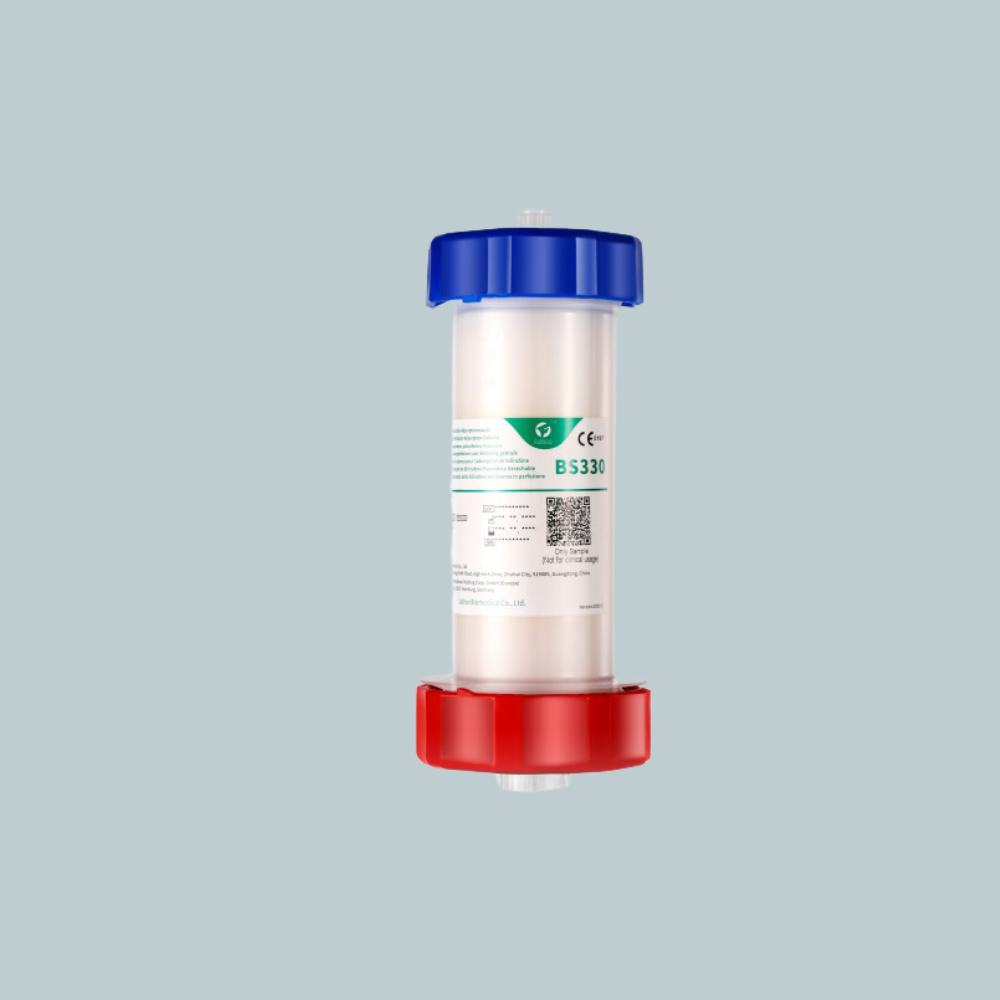BS 330 for Critical Diseases
Sepsis, Severe Acute Pancreatitis, Cardiac Surgery, Severe Burn, Trauma & ARDS
Severe sepsis and septic shock continue to be the major causes of death in the medical and surgical intensive care unit (ICU). Severe sepsis is defined as pathologic infection accompanied by a spectrum of physiologic abnormalities, originally described as systemic inflammatory response syndrome (SIRS) criteria in combination with acute organ dysfunction.
Severe sepsis and septic shock often result in multiple organ dysfunction syndromes because of dysregulated host immune response and over production of cytokines. Often the resultant cytokine storm causes difficulty in achieving hemodynamic stability & preventing multiple organ dysfunctions with the standard intensive care treatment alone.
Extracorporeal therapy can be a promising supportive treatment to remove excess inflammatory mediators, lower inflammatory cascade reaction and achieve hemodynamic stability.
CVVH is shown to partly improve clinical symptoms and signs of patients, and plays a beneficial role in treatment of MODS, but the clearance of inflammatory cytokines is limited because of material and the diameter of the membrane. CVVH is not able to remove larger molecules exceeding the molecular weight cutoff of CVVH and some inflammatory mediators with lipid solubility, high protein binding capacity, but new resin adsorbents like HA 330 can resolve this problem.
HA 330-II & BS 330 for Liver Disease
Acute Liver Failure (ALF) was defined as rapid development of hepatic dysfunction, specifically coagulopathy with international normalized ratio (INR) ≥1.5 and clinical jaundice, mental alteration (encephalopathy), while ascites may or may not be present, in a patient without preexisting cirrhosis and with an illness within 26 weeks.
ALF may be categorized as hyperacute (< 1 week), acute (1 to 4 weeks) and subacute (4-26 weeks). The leading causes include drug induced liver injury, followed by viral etiologies.
Patients with severe ALF may develop a sudden onset of cerebral edema and multi-system organ failure due to the accumulation of nitrogenous toxins (hyperammonia and hyperbilirubinemia) and release of cytokines, eventually leading to death. ALF due to many causes is a condition of difficult treatment with high mortality rates in spite of Intensive Care Unit management.
Acute-on-Chronic Liver Failure (ACLF) was defined as serum bilirubin >5 mg/dL and an INR ≥1.5 or prothrombin time activity (PTA) <40%, complicated within 4 weeks by ascites and/or hepatic encephalopathy (HE) in patients with previously diagnosed or undiagnosed chronic liver diseases. ACLF includes a subset of cirrhotic patients with high mortality and evidence of new organ failure as a result of complications such as bacterial infection, encephalopathy, or gastrointestinal bleeding.
Many studies reported that ACLF was accompanied by an inflammatory profile mimicking severe inflammatory response syndrome, featured by predominantly proinflammatory cytokines that are thought to mediate hepatic inflammation, apoptosis and necrosis of liver cells, cholestasis, and fibrosis, may lead to progression of stable cirrhosis to ACLF. Despite recent progress of medicine, ACLF remains a therapeutic challenge with extremely poor prognosis.
The past decades witnessed the rapid development of Artificial liver support system (ALSS), which have emerged as an effective approach to managing patients with liver failure.
Many types of ALSSs, including therapeutic plasma exchange (TPE), hemoperfusion, continuous hemodiafiltration, molecular absorbents recirculating system (MARS) and fractionated plasma separation, absorption and dialysis system (FPSA), have been developed and applied to the treatment of liver failure.
Even though Therapeutic Plasma Exchange (TPE) has been reported to be effective in improving liver function and reducing mortalities of ALF and ACLF, it is restricted by requirement of large amount of good plasma, and risks of allergic reaction to plasma and blood-borne disease transmission.
Hemoperfusion with HA 330-II and BS 330 can provide temporary & effective removal of an array of toxic substances and create an internal environment conducive to liver regeneration, bridging the failing liver to recovery or Liver Transplantation.
HA 330-II, with neutral macroporous resin, extensively adsorbs middle molecular toxins induced by liver disorder, such as inflammatory mediators, ammonia, phenol, mercaptan, etc.
BS 330, with anion-exchange resin, can specifically adsorb bilirubin and bile acids. It works effectively to relieve the symptoms of hyperbilirubinemia and hyperbileacidemia.
Double plasma molecular adsorption system (DPMAS) is an extracorporeal procedure that combines both the hepatic hemoperfusion cartridges (BS 330 & HA 330-II). During the procedure, toxic plasma is separated and cleansed by perfusion over two hemoperfusion columns, and the final cleansed plasma is then returned to patients.
DPMAS specifically adsorbs bilirubin, effectively clears inflammatory mediators, eases inflammation and immune responses as well as considerably relieves the symptoms of hepatopathy and eventually improves the long-term prognosis of patients with ALF and ACLF.
DPMAS does not require large volumes of plasma and nor does it bear the risk of plasma-associated allergic reaction or disease transmissions unlike Therapeutic Plasma Exchange (TPE).

